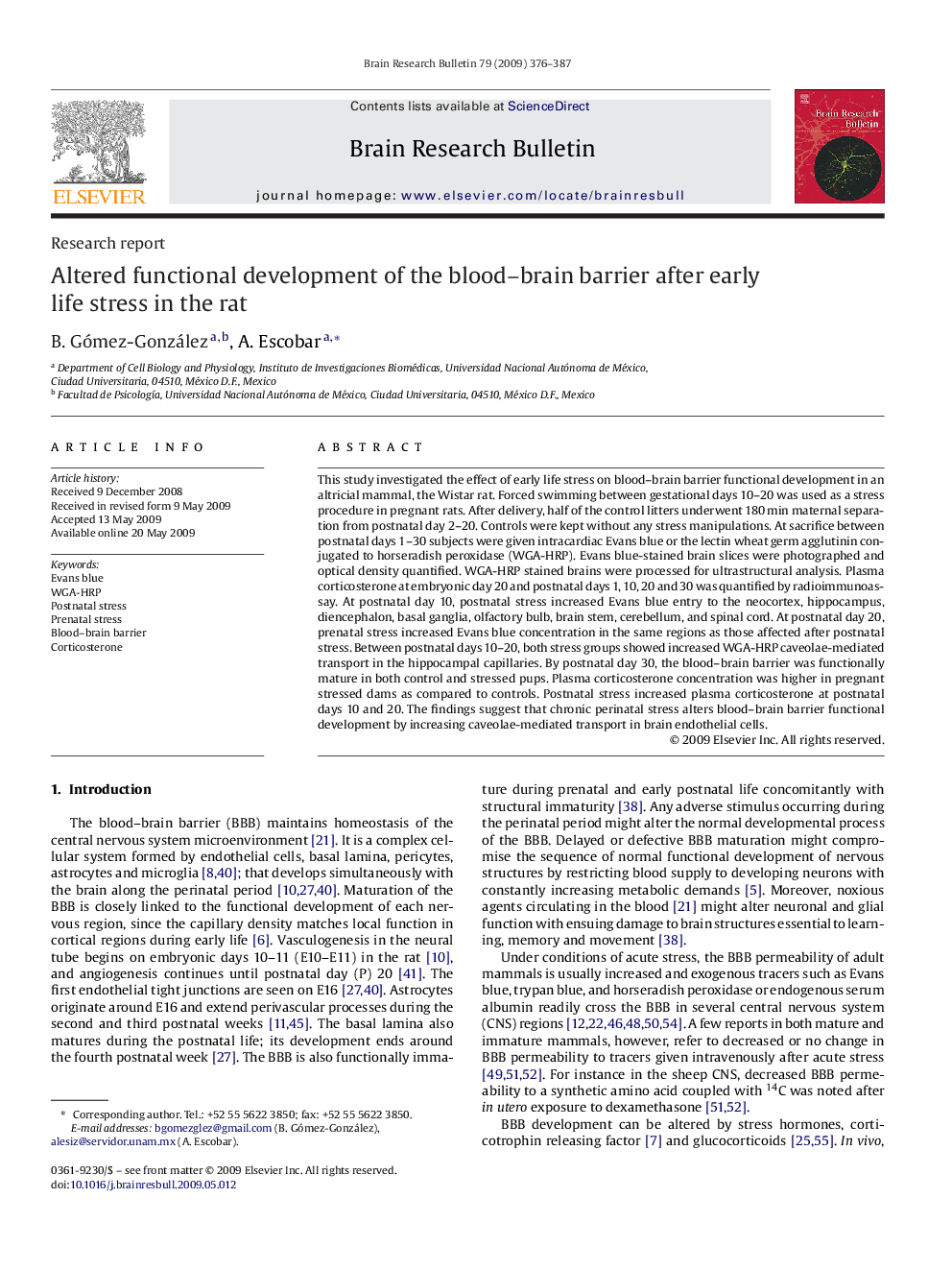| Article ID | Journal | Published Year | Pages | File Type |
|---|---|---|---|---|
| 4319488 | Brain Research Bulletin | 2009 | 12 Pages |
This study investigated the effect of early life stress on blood–brain barrier functional development in an altricial mammal, the Wistar rat. Forced swimming between gestational days 10–20 was used as a stress procedure in pregnant rats. After delivery, half of the control litters underwent 180 min maternal separation from postnatal day 2–20. Controls were kept without any stress manipulations. At sacrifice between postnatal days 1–30 subjects were given intracardiac Evans blue or the lectin wheat germ agglutinin conjugated to horseradish peroxidase (WGA-HRP). Evans blue-stained brain slices were photographed and optical density quantified. WGA-HRP stained brains were processed for ultrastructural analysis. Plasma corticosterone at embryonic day 20 and postnatal days 1, 10, 20 and 30 was quantified by radioimmunoassay. At postnatal day 10, postnatal stress increased Evans blue entry to the neocortex, hippocampus, diencephalon, basal ganglia, olfactory bulb, brain stem, cerebellum, and spinal cord. At postnatal day 20, prenatal stress increased Evans blue concentration in the same regions as those affected after postnatal stress. Between postnatal days 10–20, both stress groups showed increased WGA-HRP caveolae-mediated transport in the hippocampal capillaries. By postnatal day 30, the blood–brain barrier was functionally mature in both control and stressed pups. Plasma corticosterone concentration was higher in pregnant stressed dams as compared to controls. Postnatal stress increased plasma corticosterone at postnatal days 10 and 20. The findings suggest that chronic perinatal stress alters blood–brain barrier functional development by increasing caveolae-mediated transport in brain endothelial cells.
